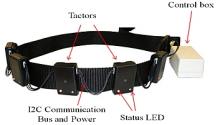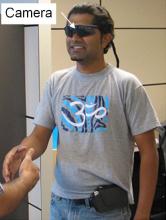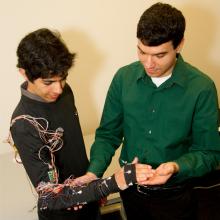
Dr. Sethuraman "Panch" Panchanathan
Position
Department
Research Profile
In June, 2020, Sethuraman “Panch” Panchanathan was appointed by U.S. President Donald Trump as Director of the National Science Foundation. Panch previously spent more than 20 years in leadership positions at Arizona State University, including service as Executive Vice President of ASU’s Knowledge Enterprise and Chief Research and Technology Officer for ASU. He is officially on an extended leave of absence from the university as he devotes his time to advancing the U.S. science and technology agenda on a national and global scale.
Publications
Projects
Recently, much research in the area of haptic technologies has focused on the development of waist-worn haptic belts, also known as vibrotactile or vibration belts, as a substitution or augmentation modality for audio-visual information. Vibrotactile belts have been used…
Effective communication requires a shared context. In face-to-face interactions, parts of this shared context are the number and location of people, their facial expression, head pose, eye contact, and movements of each person engaged in a conversation. Faces serve an…
Traditional approaches to human activity recognition relying on vision as the primary sensory medium have met with little success. The emergence of the ubiquitous and pervasive paradigm of computing has ushered in new low bandwidth wearable, unobtrusive, inexpensive and…
Every day, our body performs complex motor movements, even during the simplest of physical tasks, often without conscious thought. The movements involved in new motors skills are typically learned through audiovisual instruction, sometimes with direct physical contact…
Transit Tracker is a website and mobile application for tracking modes of public transportation in near real-time. A strong emphasis of the project is to provide a non-invasive assistive technology tool for visually impaired public transportation users, while extending…







